Centre Zone Case Study
Centre Zone
centre zone is a comprehensive solution for managing sales, purchase orders, and invoices. It provides businesses with an all-in-one platform to streamline operations, automate repetitive tasks, and enhance decision-making through integrated reporting and analytics.
-
Clients
Centre Zone
-
Technologies Used
Mongodb, PHP, Java, Selenium, Python, aws, ec2
-
Categories
RPA Automation

Problem Statement
Managing centrezone cases is a highly complex and time-sensitive process. Professionals often face challenges such as
-
Errors
-
Limited
-
Cumbersome
Errors in data entry and lack of real-time updates lead to financial and operational challenges.
There is limited visibility into key metrics such as top buyers, suppliers, and transaction trends, hindering strategic decision-making.
Collaboration across departments is cumbersome due to fragmented tools and workflows.


The Solution
The centre zone addresses these challenges with
-
Unified Interface
-
Automation
-
Customizable Fields
-
Reporting and Analytics
-
Seamless Collaboration
A centralized system for managing sales, purchases, invoices, and reports with an intuitive dashboard.
Features like auto-save, barcode integration, and real-time updates reduce manual work and errors.
Supports various trade terms, shipment modes, and payment types to suit diverse business needs.
Advanced reporting tools and visual dashboards provide actionable insights on sales, purchases, and buyer/supplier trends.
Simplifies inter-departmental workflows by consolidating all operations into one platform.
The Result
By implementing centre zone, professionals experienced the following benefits
-
Increased Efficiency
-
Improved Accuracy
-
Enhanced Decision-Making
-
Streamlined Operations
-
Cost Savings
Automated processes reduced the time spent on manual data entry and processing by 40%.
Integrated barcodes and validation features minimized errors in sales and purchase orders.
Real-time dashboards and analytics helped businesses identify top buyers and suppliers, improving profitability.
The unified interface ensured better coordination between sales, purchase, and invoicing teams, reducing delays by 30%.
Businesses saved operational costs by eliminating the need for multiple fragmented tools and systems.

Walkthrough
Sales Note Creation
-
Includes fields for buyer details, sales details, shipment details, payment terms, and additional remarks.
-
Supports multi-line data entry within a single cell for better item descriptions.
-
Automatically saves data every 2 minutes to prevent loss of information.
-
Allows uploading multiple images per item for better product identification.
-
Provides functionality to add, edit, and delete item rows with attributes like quantity, price, barcode, and more.

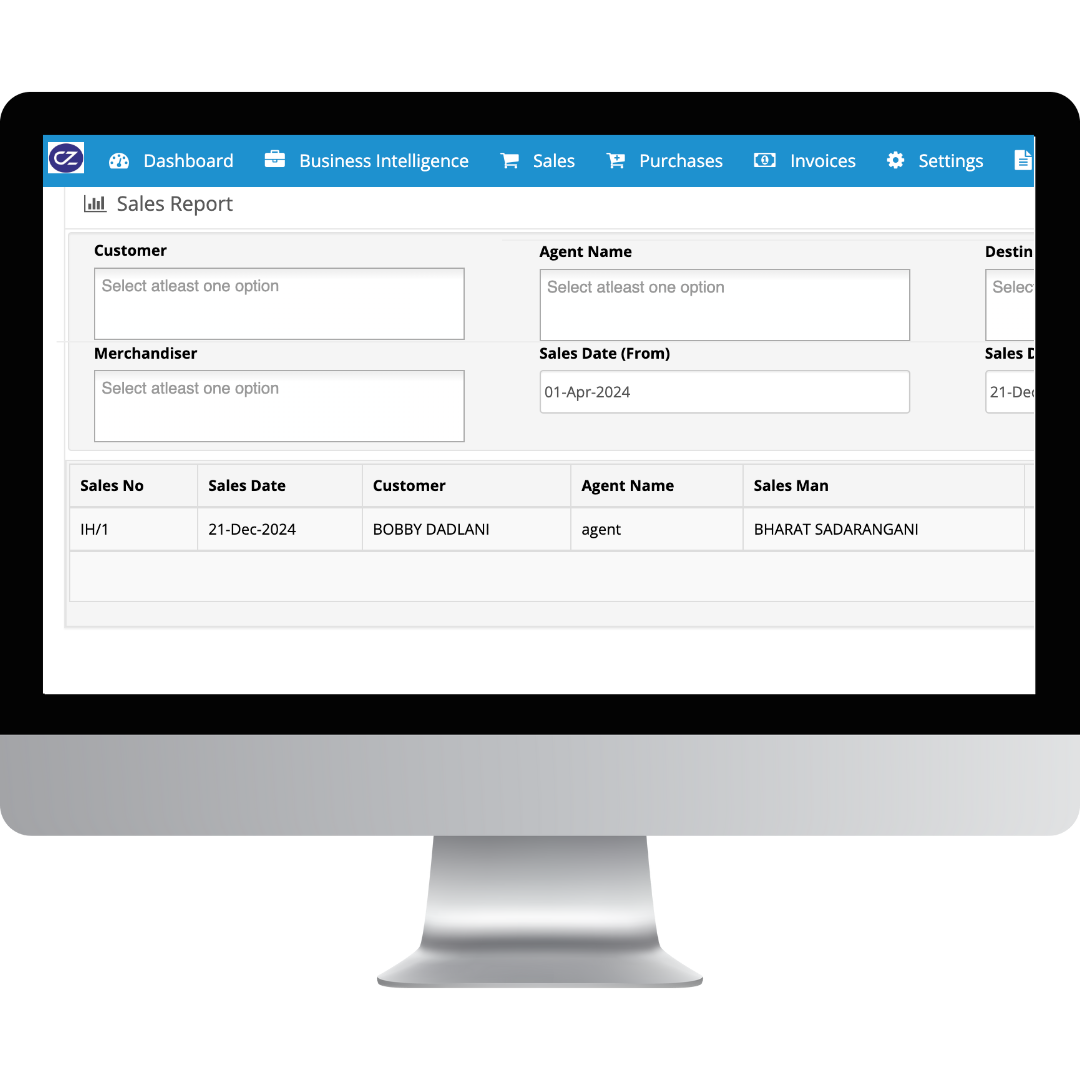

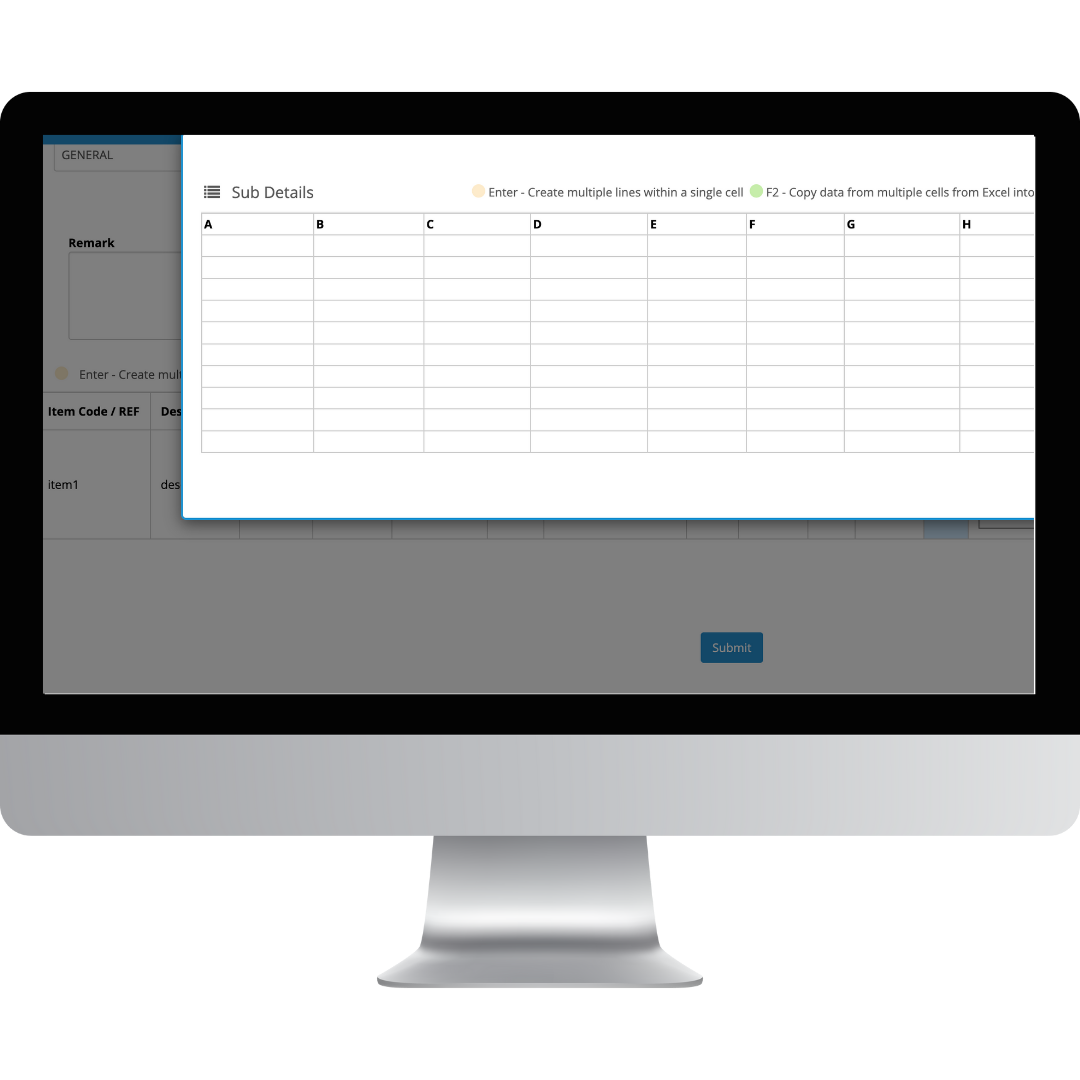
Sub-details Pop-up
-
Displays a table interface for entering granular details.
-
Includes features like F2 for copying data from multiple cells, enhancing usability.
-
Provides clear options for saving or closing the sub-details dialog.
-
Columns can be tailored for additional information storage.
-
Sub-details feed directly into the main sales note form for a seamless experience.
Sales Note Interface
-
Includes fields for sales ID, sales date, buyer name, shipment mode, and trade terms.
-
Dropdowns for trade terms, shipment modes, and payment types ensure adaptability to different scenarios.
-
Ensures no loss of entered data by saving progress every 2 minutes.
-
Includes fields for product description, quantity, unit price, and total calculation.
-
Clean, organized layout for efficient data entry and review.
-
Allows seamless data entry and navigation similar to Excel functionality, improving usability.
-
Supports entry of additional details using a spreadsheet-style interface.
-
Allows copying and navigating data from multiple cells, similar to Excel.

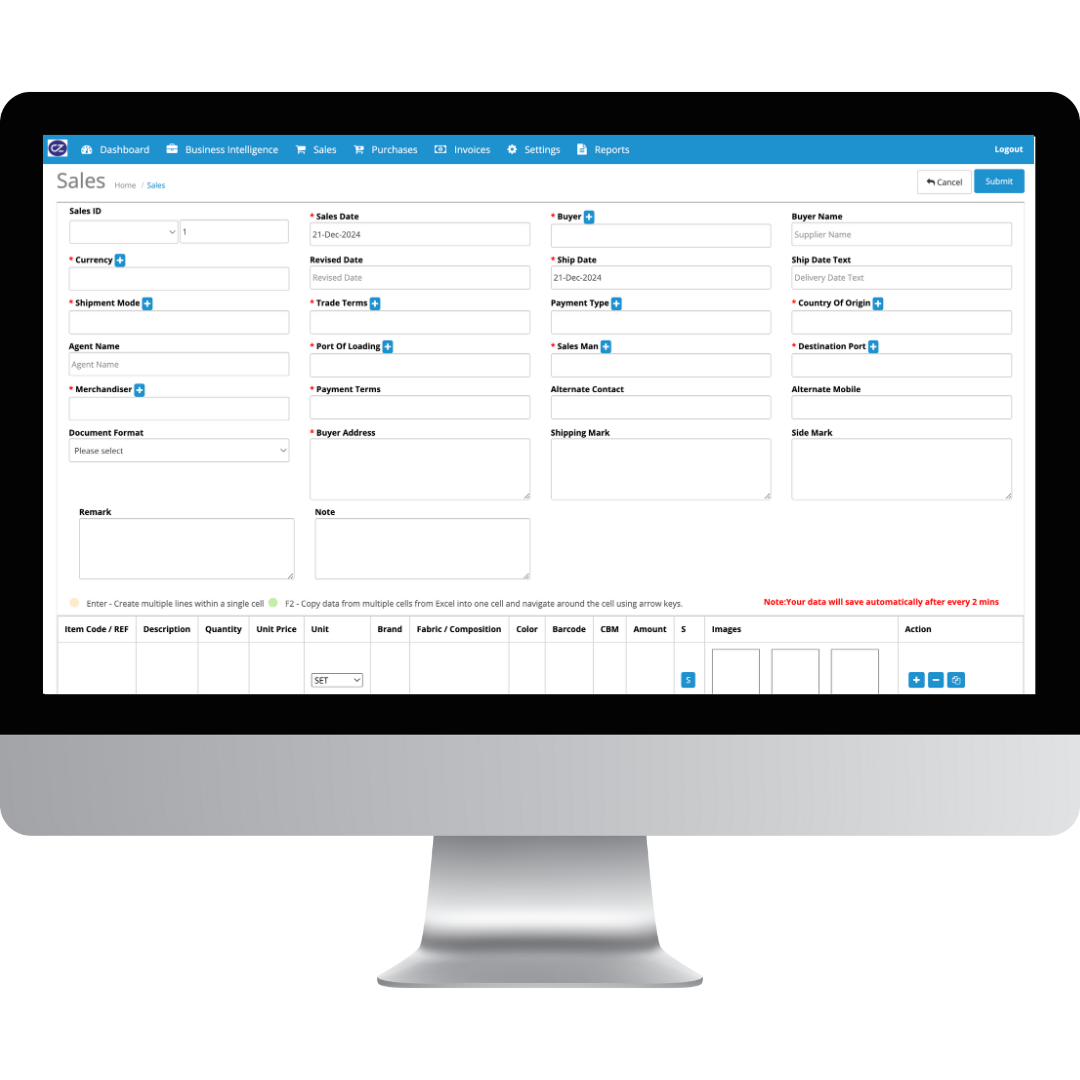

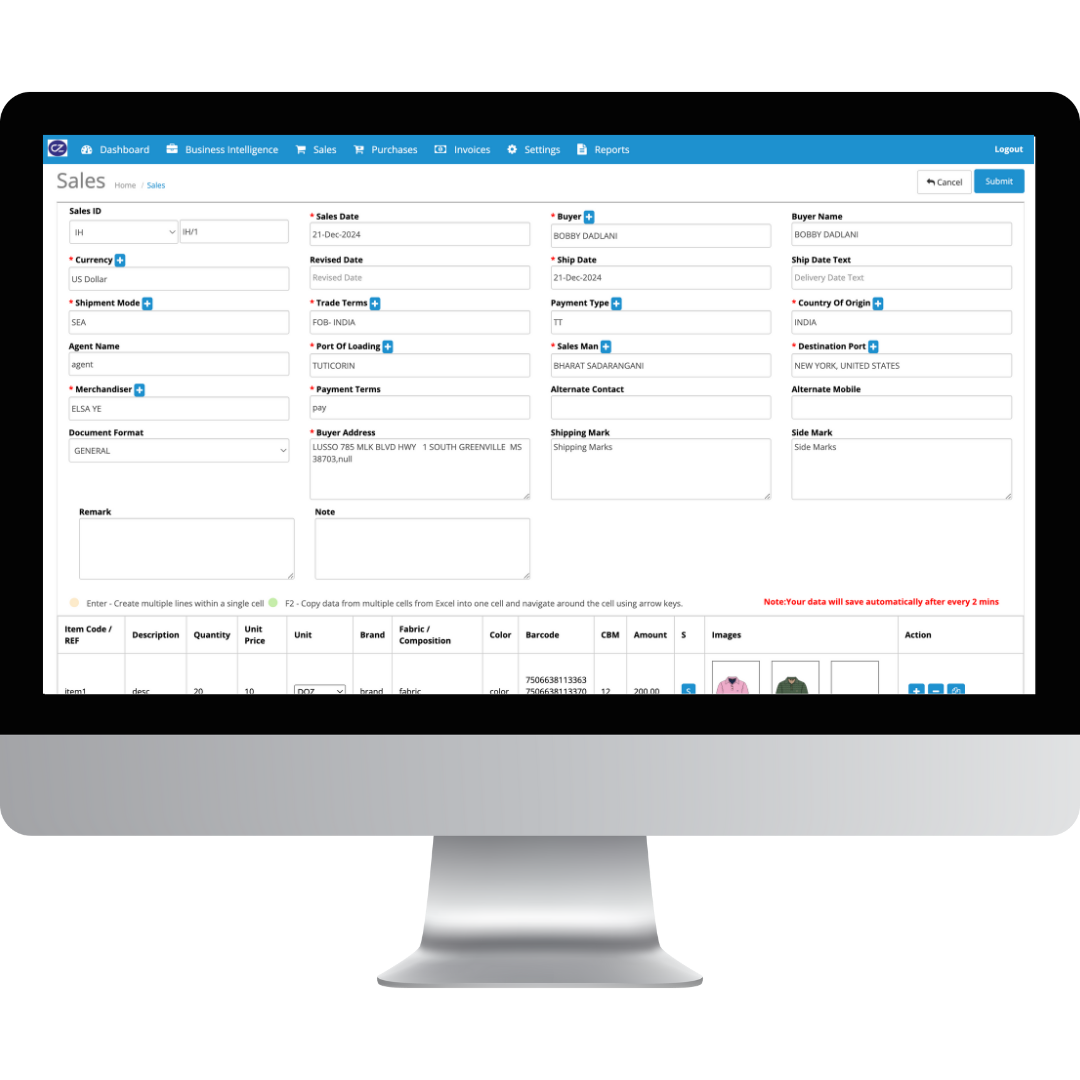
Sales Data Summary
-
Displays a summarized list of sales data with Sales ID, Buyer Name, and corresponding details.
-
Includes buttons for generating Purchase Orders (PO) and Invoices directly from the summary.
-
Features filters to narrow down data by Sales ID or Buyer for quicker access.
-
Tracks balance quantities for sales and invoices, ensuring accurate reconciliation.
-
Provides options for exporting data into Excel or PDF formats for offline analysis.
Sales and Purchase Data Pop-Up
-
Combines sales and purchase data in a single view, showing Sales Qty, Purchase Qty, and corresponding balances.
-
Highlights balance quantities for both invoices and purchases for better inventory control.
-
Includes buttons to refresh data, create PO, and generate invoices directly from the table.
-
Allows selection of specific rows for batch processing or individual actions.
-
Clean and concise layout for efficient review and data updates.

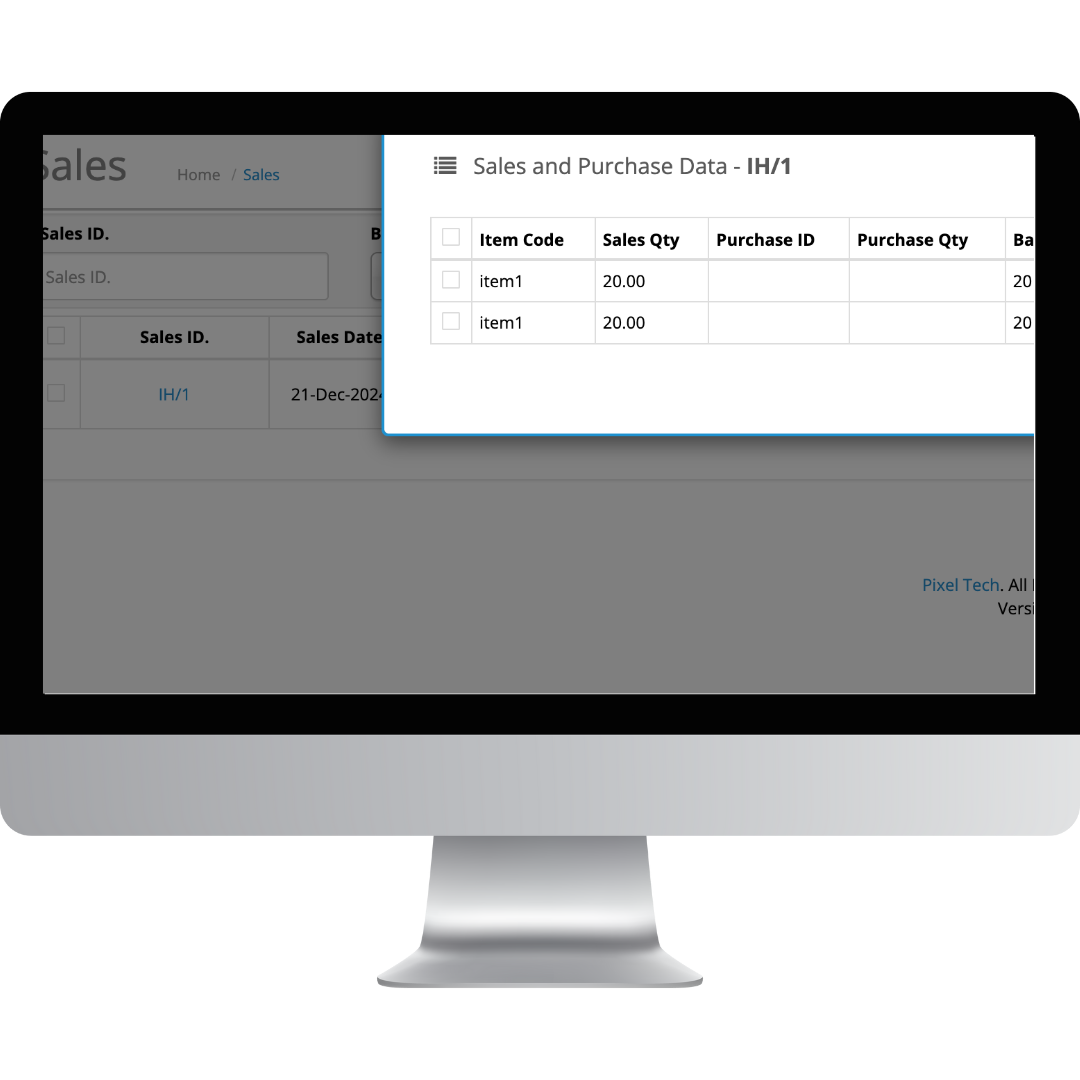

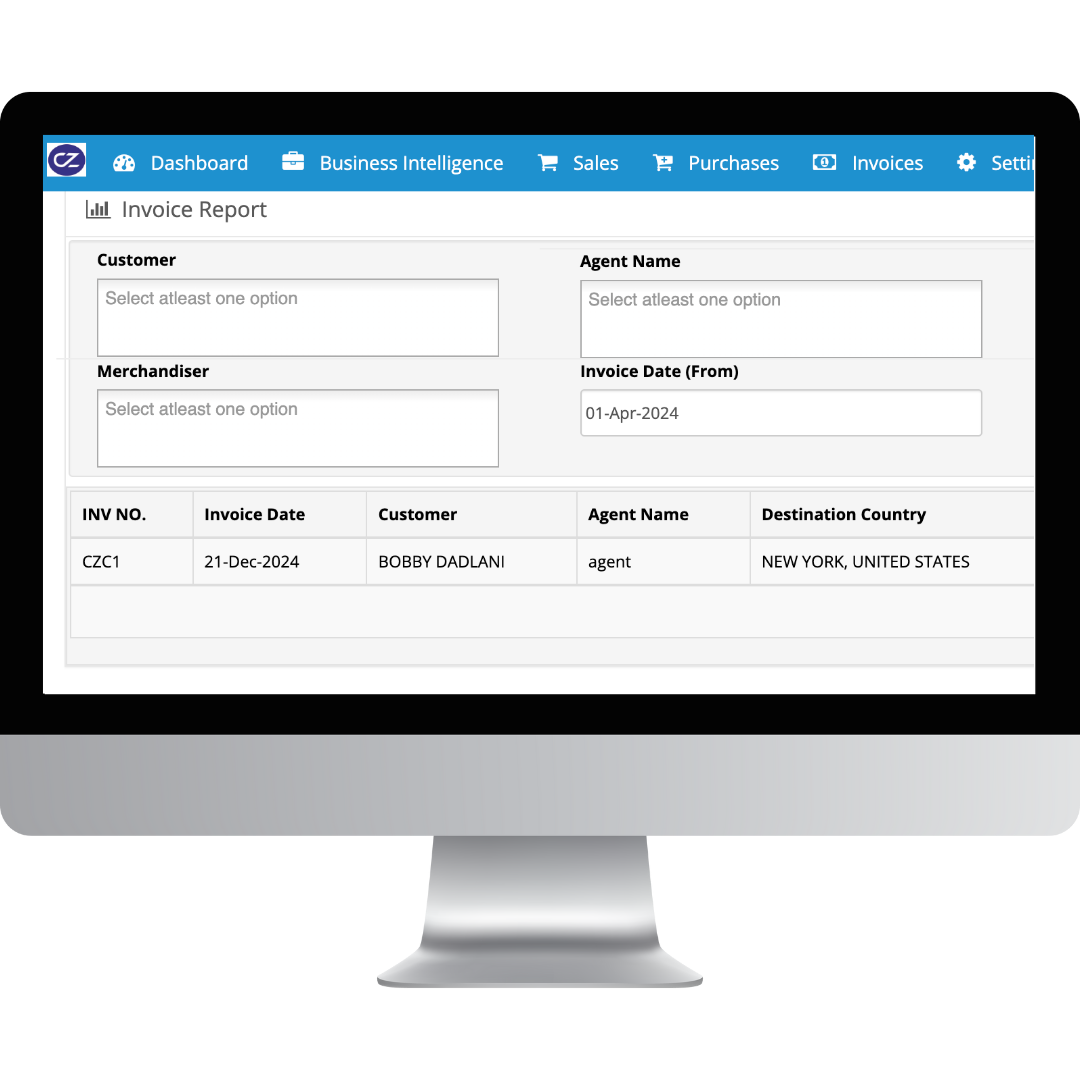
Invoice Creation and Management
-
Fields to input invoice number, buyer details, shipment mode, and payment terms.
-
Detailed entry for items, including quantity, unit price, brand, color, and images.
-
Real-time data autosaving functionality every two minutes.
-
Options to add, edit, or delete item rows dynamically.
-
Grand total calculation displayed at the bottom of the invoice form.
Invoice Overview
-
Displays a summary of invoices with key details like buyer name, invoice ID, and order amount.
-
Buttons for printing, editing, or duplicating invoices.
-
Dropdown and text-based search functionality to locate specific invoices.
-
Clear indication of newly added invoices for easy tracking.
-
Easy navigation and linkage to sales confirmation numbers.

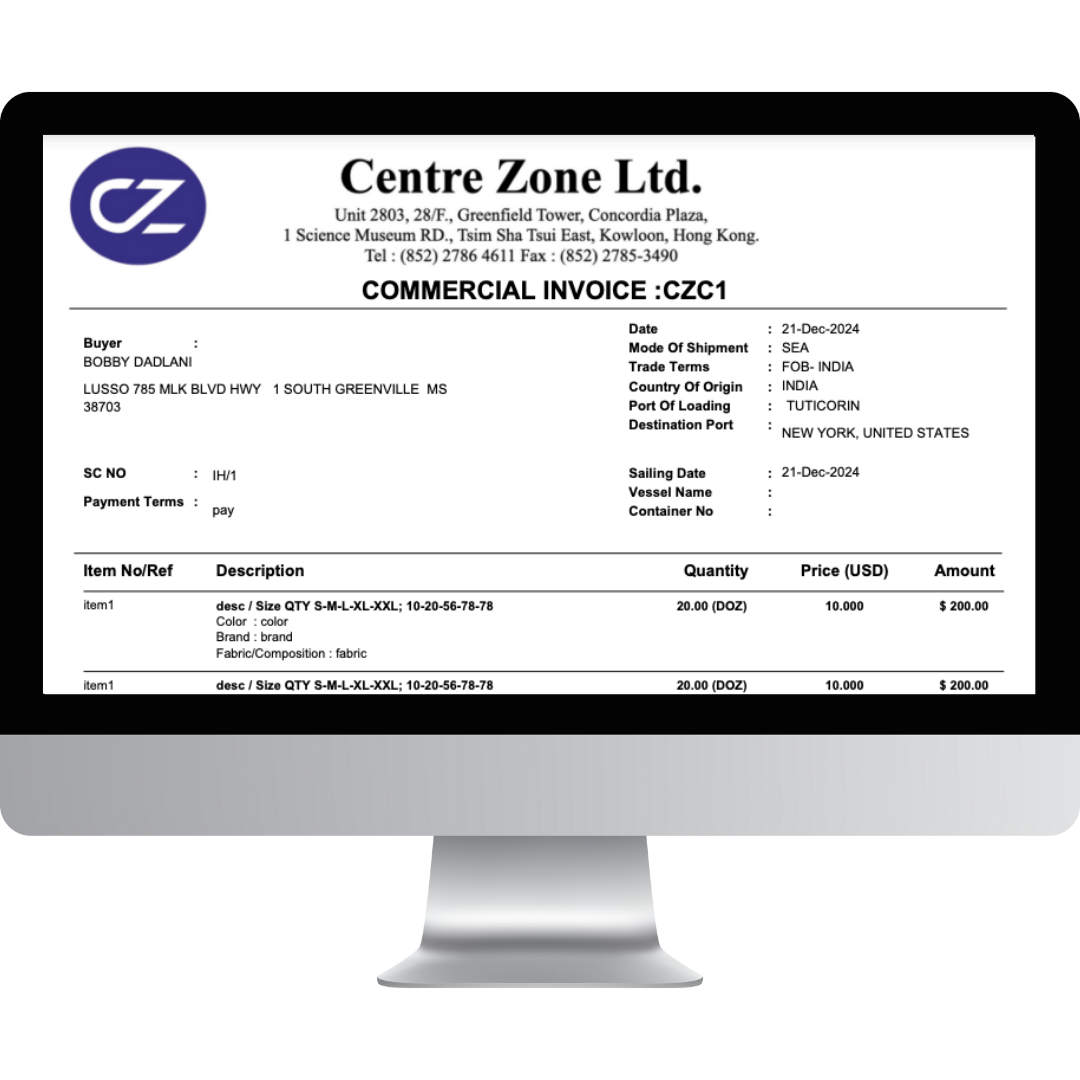

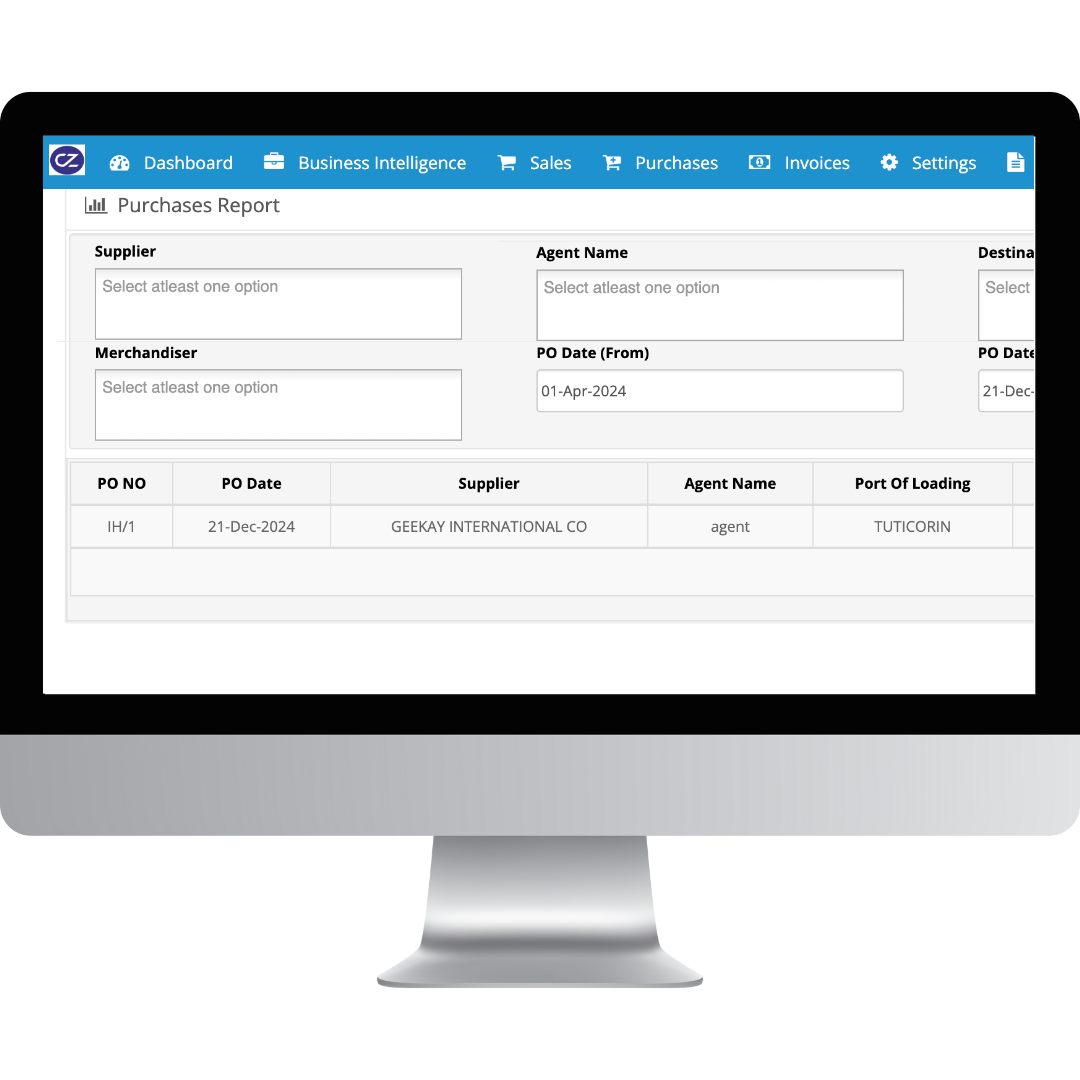
Purchase Order Creation
-
Detailed form to enter supplier details, delivery date, and payment terms.
-
Specific fields to input product descriptions, unit prices, and specifications like color and fabric.
-
Ability to attach sales confirmation numbers directly to the purchase order.
-
Add or remove product rows with an intuitive interface.
-
Automatic calculation of total purchase amount and quantities.
Purchase Order Overview
-
Displays key information such as supplier name, currency, and purchase ID.
-
Options to view, edit, or duplicate purchase orders directly from the dashboard.
-
Immediate confirmation for added purchase orders with success notifications.
-
Advanced filters for sorting purchase orders by supplier or country of origin.
-
Instant access to order quantities and amounts in a tabular format.




Reports Section
-
Filter reports by customer, agent, merchandiser, or date range.
-
Displays all key details like invoice numbers, sales dates, destination countries, and totals.
-
Provides an overview of the transaction amounts in multiple currencies.
-
Enables downloading reports or exporting to external systems.
-
Summarizes sales and purchase data for better decision-making.
Business Intelligence Dashboard
-
Displays pie charts for top buyers and suppliers, along with sales and purchase trends.
-
Analyze data for a selected period using custom date ranges.
-
Highlights monthly sales and purchase values in graphical form.
-
Updates analytics as new data is entered into the system.
-
Provides intuitive and clean layouts for quick insights into business performance.

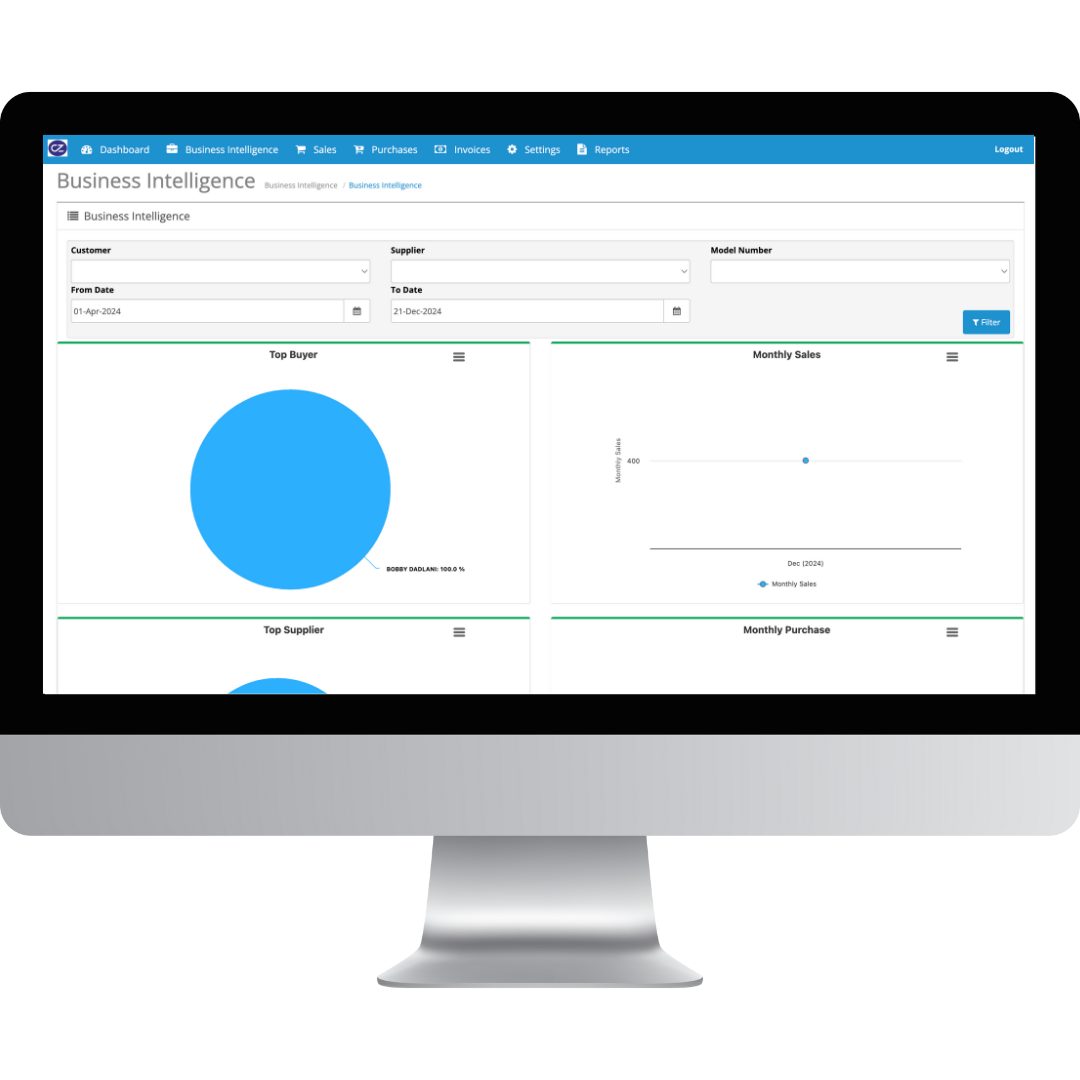

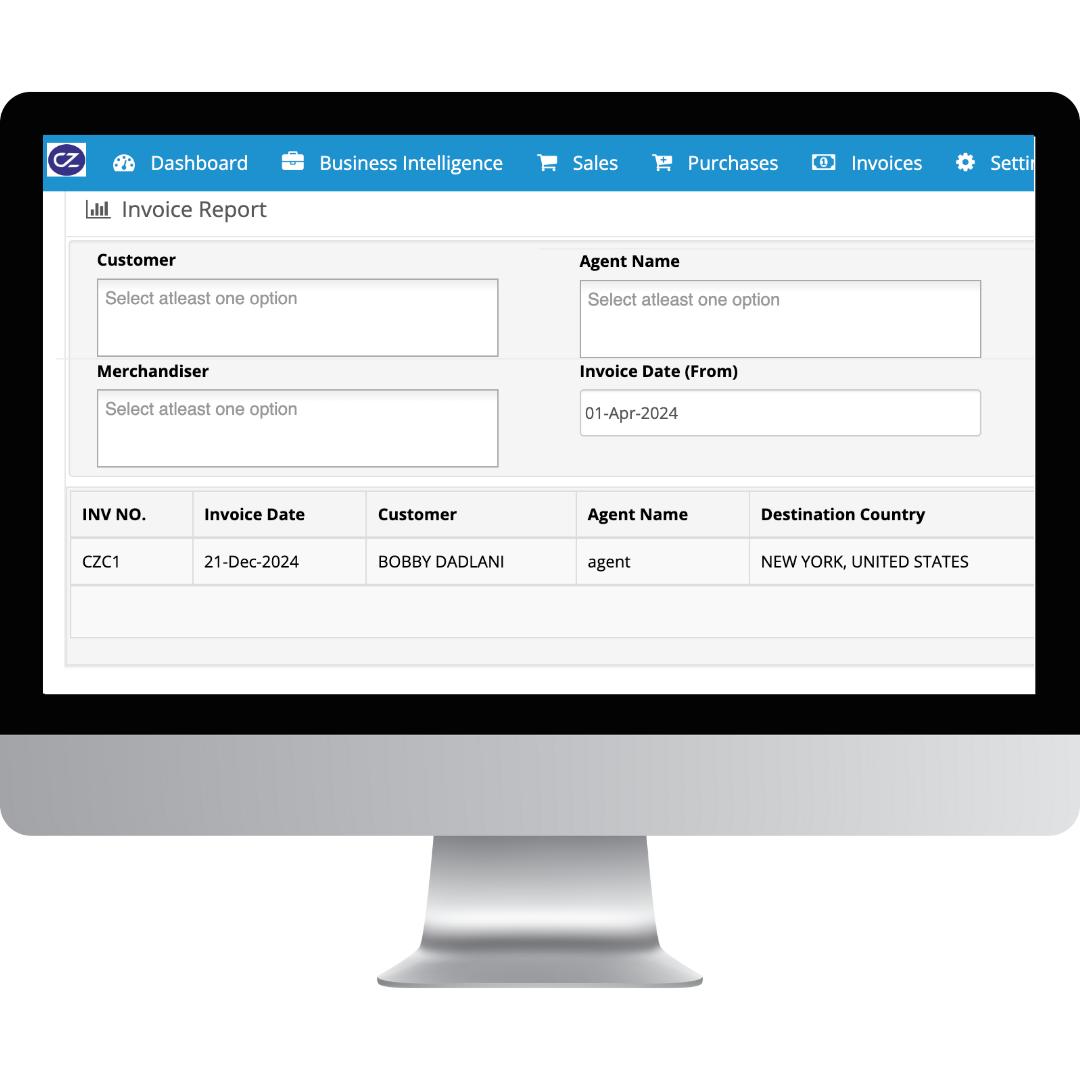
Main Dashboard
-
Displays summary cards for sales, invoices, purchases, and payments.
-
Directs users to detailed transaction lists or report sections with a single click.
-
Displays overall totals for each transaction type.
-
Easy-to-understand interface for navigating key metrics.
-
Reflects recent transactions and payments dynamically.
PHP
Mature Language:
PHP has been around for a long time and has a large community, making it easy to find solutions to common problems.
Built for Web:
PHP was specifically designed for web development and includes built-in features for handling HTML and HTTP.
Integration:
PHP integrates well with various databases and web servers.
Laravel
Elegant Syntax:
Laravel’s syntax is expressive and elegant, making it a joy to work with for many developers.
Robust Features:
Laravel comes with a lot of out-of-the-box features like routing, authentication, sessions, caching, and more.
Ecosystem:
Laravel has a rich ecosystem with hosting platforms, local development environments, and robust libraries.
Flutter
UI Toolkit:
Flutter is a UI toolkit that allows developers to create natively compiled applications for mobile, web, and desktop from a single codebase.
Hot Reload:
Flutter’s hot reload helps you quickly and easily experiment, build UIs, add features, and fix bugs.
Widget Library:
Flutter has a rich set of widgets and extensive capabilities for creating complex custom widgets.

